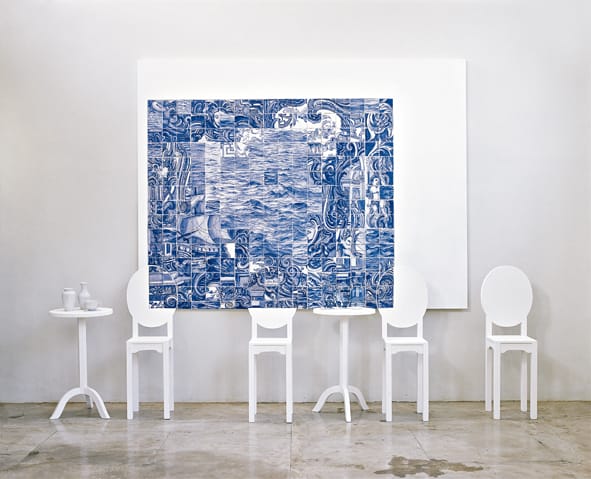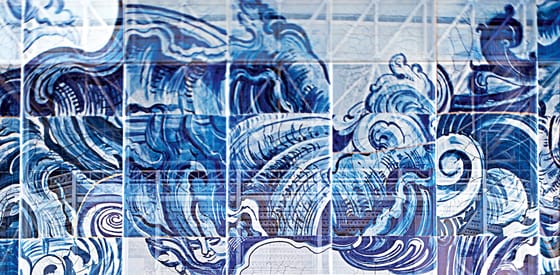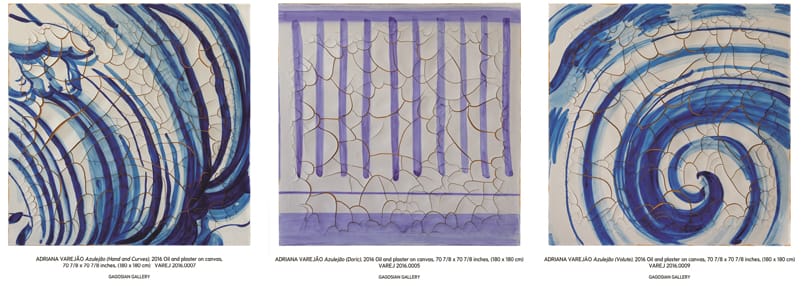“In the Baroque, beauty and the grotesque are always like opposites—it’s an aesthetic that deals with contrasts.”
—Adriana Varejão
Best known for her ‘azulejão’ or ‘big tile’ paintings created from her fascination of the history and culture of Brazil, Adriana Varejão is closing the gap between painting and sculpture.
Drawing inspiration from the brutal colonialism of Brazil, baroque art and architectural ruins, Adriana capitalises on aesthetic that deals with contrasts and often pours her heart out into an azulejo, a terracotta tile widely used as decoration in Portugese national art from the Middle Ages onward.

Tea and Tiles II, 1997, Adriana Varejão. Photography: Courtesy of Eduardo Ortega
Varejão’s works are depicted on canvas with plaster and oil paint. A special technique that very few artists have adopted, the plaster is applied thickly to the canvas before left to dry. During the natural process of air drying, hairline cracks will form from the shrinking of plaster. A natural phenomenon that has been set as the unique signature of her works.

Varejão’s reconigured Celacanto Provoca Maremoto for the Olympic Aquatics Stadium at Rio. Photography: André Motta
Recently, she was commissioned to produce a temporary mural based on her aquatic piece of Celacanto Provoca Maremoto (2004-2008) for the Summer Olympics in Rio de Janerio. In this piece, Varejão housed inscriptions of history, culture, landscape, geography and the human body from her earlier paintings into a whirlwind of blue-and-white patterns.

Coelacanth Provokes Seaquake], 2004-2008. Photography: Courtesy of Eduardo Eckenfels
Now, Adriana brings her latest project with Gagosian Rome to feature her largest single tile paintings to date. Her works are never what it seems to be from afar – one is encouraged to take a close look in person to discover elements of history, culture, and landscape – all invocated within her azulejo art pieces.

Azulejões (waves) – diptych, 2000. Photography: Courtesy of Vicente de Mello

Left: Azulejão (Hand and Curves), 2016. Middle: Azulejão (Doric), 2016. Right: Azulejão (Volute), 2016. Photography: Courtesy of Vicente de Mello
Adriana Varejão: azulejão is ongoing until January 14 at Gagosian Gallery, Rome, Italy. www.gagosian.com



